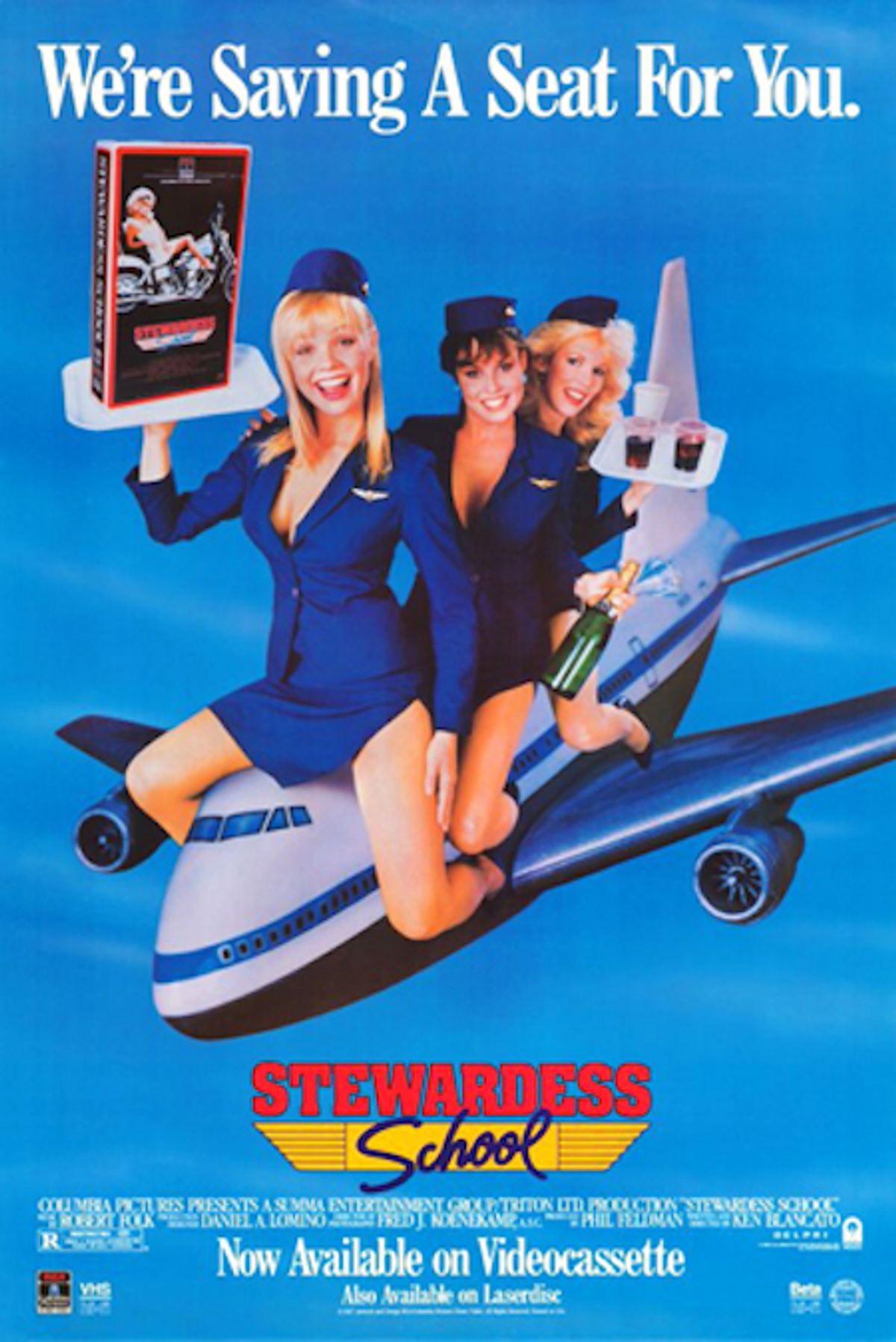 The first legend about flying females was that of witches -- women who made pacts with the devil. They turned brooms, a symbol of servitude and submission, into one of power and flight. To fly, all they needed to do was put the long handle of a broom between their legs.
The first legend about flying females was that of witches -- women who made pacts with the devil. They turned brooms, a symbol of servitude and submission, into one of power and flight. To fly, all they needed to do was put the long handle of a broom between their legs.
The next flying possibility for females appeared in France in 1695 with the publication of the book "Tales of My Mother Goose." In that case, the female was riding the long neck of the goose. Soon after, other elongated animals followed.
But males wanted to fly too. Icarus' method did not work for them. They wanted to sit on something too. The first publication of "The Surprising Adventures of Baron Munchhausen" in Germany in 1781 gave them that opportunity, putting Baron Munchhausen on the ball. Actually, on a cannon ball.
In 1943, the German movie "The Surprising Adventures of Baron Munchhausen" was released. Here is a French version of the DVD cover for the same movie. I would like you to pay attention to the configuration and shapes of the surrounding towers/minarets. Very soon, everybody was sitting on one kind of ball or another.
But let's go back to the cannon ball. Actually, to the cannon -- that elongated, powerful weapon which propels the cannon balls. In the case of the cannon, size matters. The bigger the size, the further it can propel the cannon balls/shells.
In 1917, the U.S. Navy released the poster "Join the Navy," created by an artist named Babcock. No doubt it was influenced by the story of Baron Munchhausen and the image of cowboys riding wild broncos.
In the Second World War, the airplane squads would often paint pinup girls on the nose of the airplanes. Some of them were shown sitting on bombs or riding them. 

Director Stanley Kubrick immortalized riding bombs in his ironic Cold War comedy "Dr. Strangelove or: How I Learned to Stop Worrying and Love the Bomb." (1964)
The Cold War introduced a new vehicle to ride: the nuclear rocket. Rockets with aerodynamic shapes were created for deep penetration behind enemy lines. And probably for those reasons, they became desirable objects on which to sit.
Old means of transportation such as airplanes and trains remained desirable to ride, as in the case of the ad for the Pennsylvania Railroad with Roy Rogers. Only I am a bit confused: does this mean Roy has a big or small train?
But then again, one does not need vehicles to ride or sit on. Any elongated object will do the trick, such as a bottle, a carrot, a banana, a cigar, a pencil, a log or a wrench.
On the Flickr slide show (also below), you'll find over 230 images on this subject. Ride on.
All images on this page are courtesy of Mirko Ilic, a New York-based graphic designer and illustrator. He co-authored "The Design of Dissent," with Milton Glaser, and "The Anatomy of Design and Icons of Graphic Design," with Steven Heller. He teaches illustration at the School of Visual Arts.
Copyright F+W Media Inc. 2011.
Salon is proud to feature content from Imprint, the fastest-growing design community on the Web. Brought to you by Print magazine, America's oldest and most trusted design voice, Imprint features some of the biggest names in the industry covering visual culture from every angle. Imprint advances and expands the design conversation, providing fresh daily content to the community (and now to Salon.com!), sparking conversation, competition, criticism, and passion among its members.




























Shares